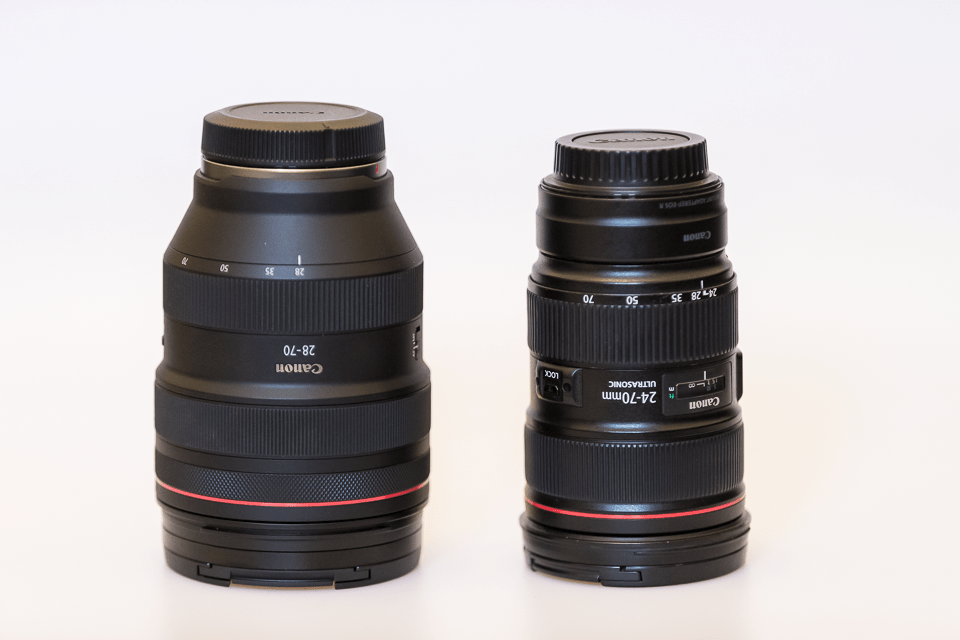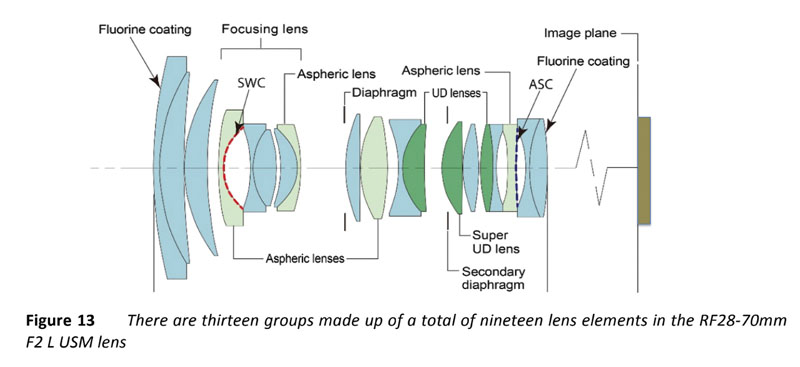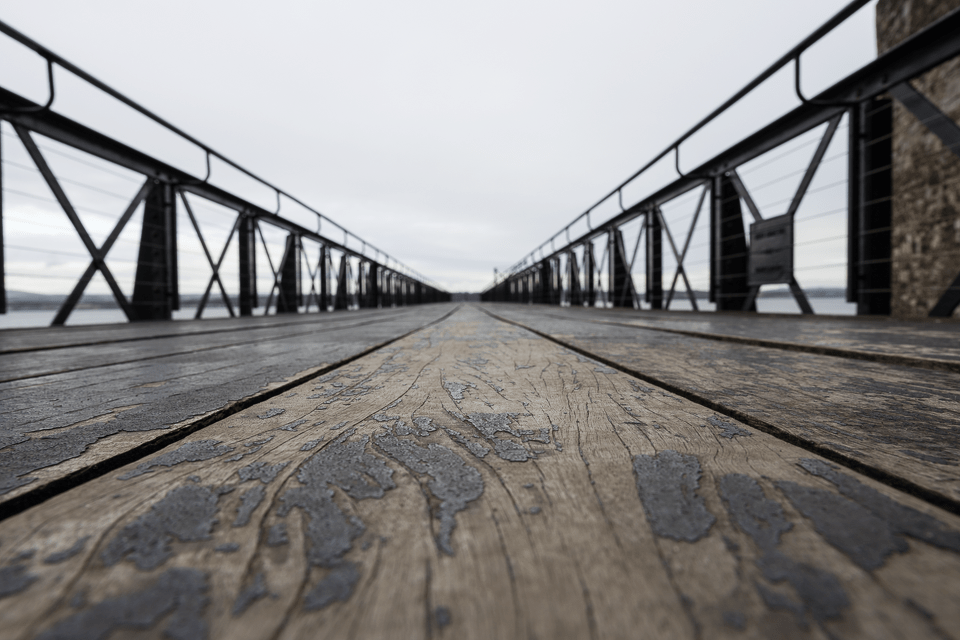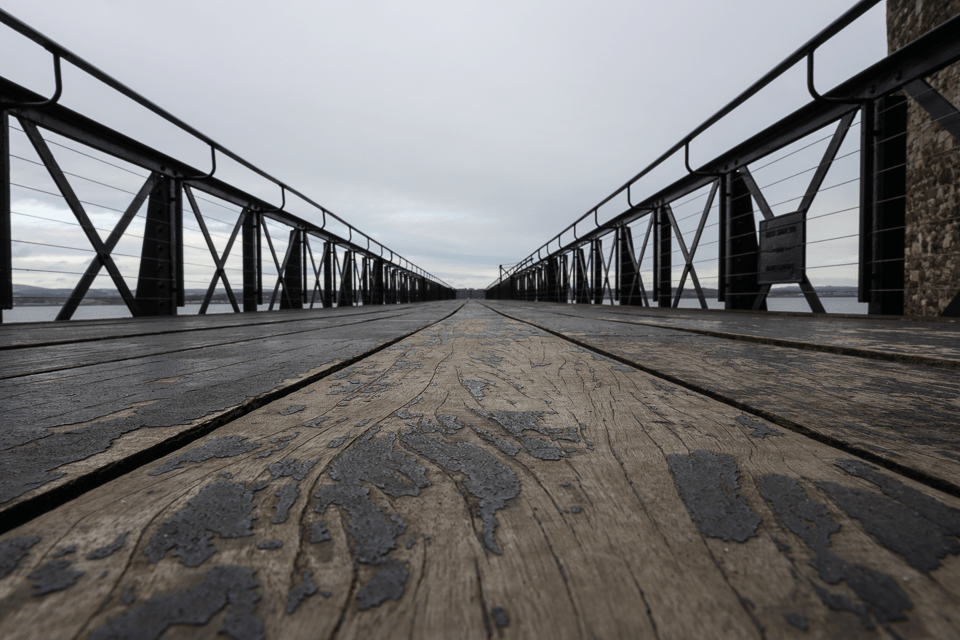January 15, 2020
Canon RF 28-70 f/2 lens
We’ve got our hands on the new Canon RF 28-70 lens made for the full-frame mirrorless R range

When Canon announced its first full-frame mirrorless camera they also launched a new lens mount system called the RF. In order to allow existing customers to use their old lenses, they also produced an adapter that means the old EF and EF-S mount lenses could also be used. The RF lenses are designed to perform much better on mirrorless cameras because the gap between the lens and sensor is much closer on the new system. I’ve had the opportunity to try out the Canon RF 28-70 f/2 lens for a day and I thought I’d share some first impressions.
The Canon RF 28-70 lens has been targeted toward travel, wedding and photo-journalist photographers. The widest aperture is a full f stop wider than the Canon EF 24-70 which means that it will be great for low light. However, let’s get over the cost issue from the outset. The price quoted on the Canon UK website is just a penny short of £3,050 so you are going to be needing big pockets to be able to afford it!
Canon RF 28-70 Specifications
With such a big-ticket price the Canon RF 28-70 needs to have an impressive performance level to justify its purchase, so what are you buying. Firstly, this lens is a beast! It weighs in at 1430g, so whilst it is aimed at the travel photography market, it isn’t going to be easy to carry around! The photograph below compares the size of the Canon RF 28-70 on the left against the Canon EF 24-70 on the right. I have left the RF adapter on the 24-70 so that it gives a fair indication of size when being used on the mirrorless system. You can clearly see that this lens is going to be pretty obtrusive.

The next difference that is noticeable between the RF and EF lenses is the diameter of the lens. The EF lens has a diameter of 82mm which is dwarfed by the RF 28-70’s 95mm diameter. This does cause a bit of a problem with the type of photography I prefer. The Kase K8 filter system that I use and recommend doesn’t have a filter ring that would fit this specific lens, although you can buy circular ND filters that will fit this diameter.
The final feature on this and other RF lens mount lenses is the addition of a control ring. This can totally change the way that you’ll use your camera. I tend to shoot in full manual 99% of the time. When I am working on press jobs, I’ll have the ISO set to automatic and change the aperture and shutter speed. However, in some circumstances, I may want the Auto ISO to use exposure compensation. This would mean making changes to the Q menu on the back of the camera. With the new Control Ring, I can now define in the Custom Functions what the Control Ring will effect. I have set it to Exposure Compensation so with a quick twist I can dial in the compensation I need to perfect my exposure.
Why so big?
I can’t say this often enough, this is a big and heavy lens that is going to go in front of a very light mirrorless camera. It weighs about the same as the EF 70-200 lens! So why have Canon produced such a large beast of a camera? The simple answer is performance.
The extra stop in the aperture range needs to have that extra diameter in order to suck in more light to the lens. Then, more importantly, Canon has squeezed in 19 lens elements in 13 groups. This lens has been designed to be the very best it can be so in the next section we’ll have a look at how it performs in a variety of circumstances.

Canon RF 28-70 lens performance
I only had the use of this lens for around 24 hours so I was quite limited in the situations I could try out the lens. I was particularly going to try shooting throughout the aperture ranges. Did the lens retain its sharpness when wide open at f/2? Would there be chromatic aberration creeping in at f/22? I also wanted to try out how good it would be when we’re shooting in low light. I’ve already shown in my review of the Canon R camera that the sensor performance of the mirrorless range is as good as the high-end Canon 1DX MkII. How would we see performance when combined with this lens?
Lens performance through the aperture range
Let’s start with seeing how the lens performs throughout its aperture range. I headed out to Blackness Castle to give it a bit of a test drive. At the castle, there is a great wooden pier stretching out into the River Forth. I got the camera as low as I could and then set the aperture to f2. One of the things to be aware of is that this lens doesn’t have a macro function so it’s shortest focusing distance is 50cm. This should give a depth of field of just 3.6cm when using the lens at its widest angle and then reduces to just half a centimetre when zoomed in to 70mm and focusing at its closest distance. You can see the narrowness of the depth of field in the first shot but the area in focus is really, really sharp.

At f11 the centre sharpness is still really good. There is a cinematic feeling to the way the lens is capturing the dynamic range in the image. All these images have been imported straight into Lightroom without any manipulation.

At f22 we have a great effect with a good level of sharpness throughout the image. The close focus means that we aren’t focussing to infinity but the quality is excellent. Despite the aperture being as small as it can go there is absolutely no chromatic aberration.

Chromatic Aberration Performance
When I teach on my Switch to Manual Workshop I always state that it’s a good rule of thumb to try and keep apertures bigger than f/16. The reason for this is that as the aperture gets smaller, the diffraction of light tends to cause chromatic aberration which would appear as a purple or blue line where, for example, buildings meet the sky.
If someone were to attend the workshop with this lens, I’d need to hide that slide in my presentation. Those 19 elements in the lens have produced unbelievable performance. The image below was taken at the widest angle (28mm) at f/22. The image by the side is a very small crop and shows absolutely no chromatic aberration at this small aperture.
Canon RF 28-70 at work
Where I think this lens works best is for shooting portraits. If I were spending most of my time shooting client headshots then without a doubt I would be making the outlay for this lens. Serious headshot photographers would usually use prime lenses at 28mm, 35mm, 50mm and 85mm. This means carrying four lenses around with you. The performance of the Canon RF 28-70 is such that you could easily use the one zoom to capture images at the same quality and (near enough) the same focal range.
The shots below have been taken from left to right at 28mm, 39mm and 47mm and certainly have the same sharpness that I would expect from comparable zoom lenses.
Will I buy the lens?
I think it’s clear to see from this review that it is a great lens. The performance throughout the aperture range is superb. It is unbelievably sharp. The engineering of the glass means that you can shoot all the way from f/2 to f/22 and not see any diffraction.
However, there are three downsides to this lens. The first is cost, the list price of £3,000 is more expensive the most expensive camera this lens can work on. There needs to be a serious payback and the type of work I do wouldn’t get me £3,000 of additional work. The second is weight – have I mentioned it’s a chunky piece of kit? I really couldn’t see me wanting to carry this amount of weight when I am walking hills or doing press work. The final downside for me is the inability to add the Kase filters I use for my landscape work.
For me, this isn’t a lens I would buy. That doesn’t mean it’s the same for everybody. If you’re a wedding, portrait or even live music photographer and you can afford it – buy it! It’s amazing!
Give us your feedback
If you’ve got any questions or comments, leave them below. You can sign up for the Edinburgh Photography Workshop monthly newsletter where you’ll get regular updates on interesting things happening in photography and some great tips. Sign up by clicking here.
